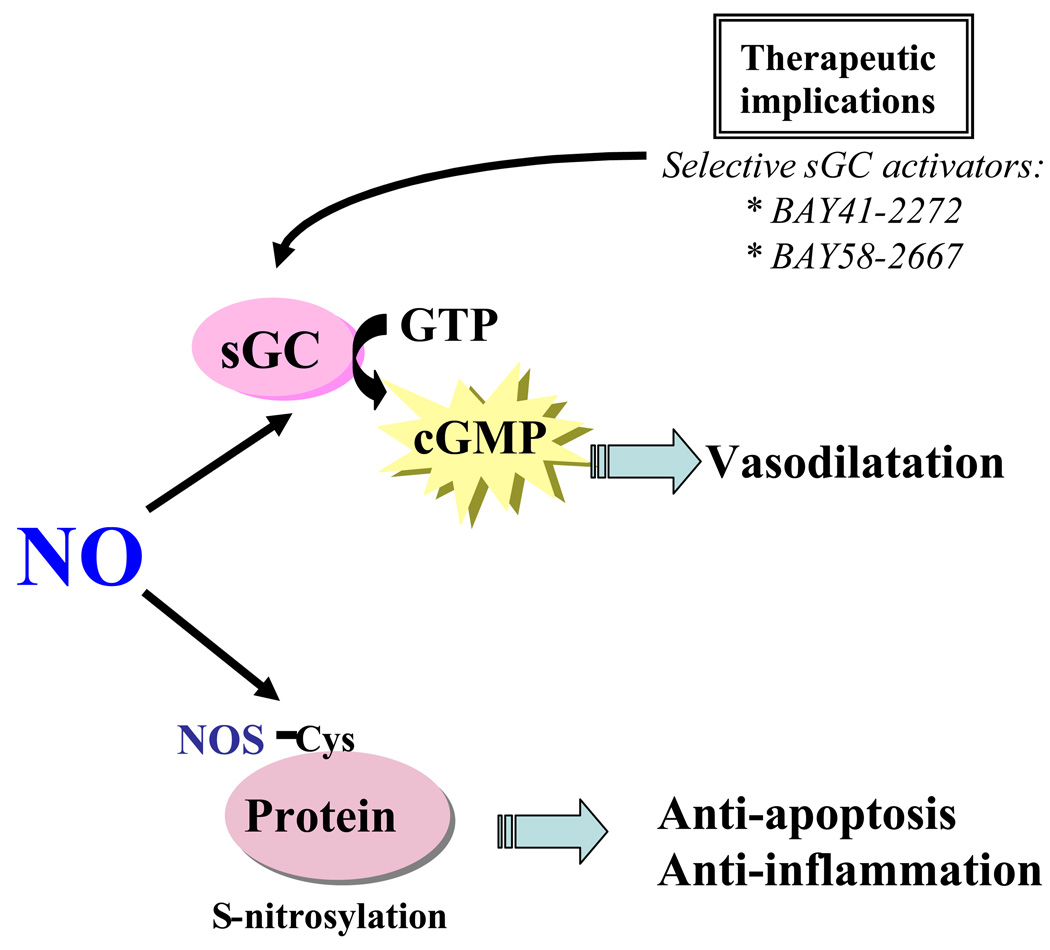Figure 2. NO signaling mechanisms.
NO acts in part by stimulating soluble guanylate cyclase (sGC) to produce intracellular second messenger cyclic guanosine monophosphate (cGMP), which in turn mediates vasodilatation. Direct activation of sGC through drugs such as BAY41-2272 and BAY58-2667 has been shown to have a remarkable ability to dilate blood vessels, and thus may provide an alternate therapeutic target downstream from NO in vascular diseases that benefit from enhanced NO signaling. Besides the conventional NO signaling via cGMP, NO induced S-nitrosylation, the coupling of an NO moiety to a reactive thiol side chain of cysteine to form an S-nitrosothiol, has been proposed as a specific post-translational regulatory mechanism for many proteins and may mediate diverse biological functions.

